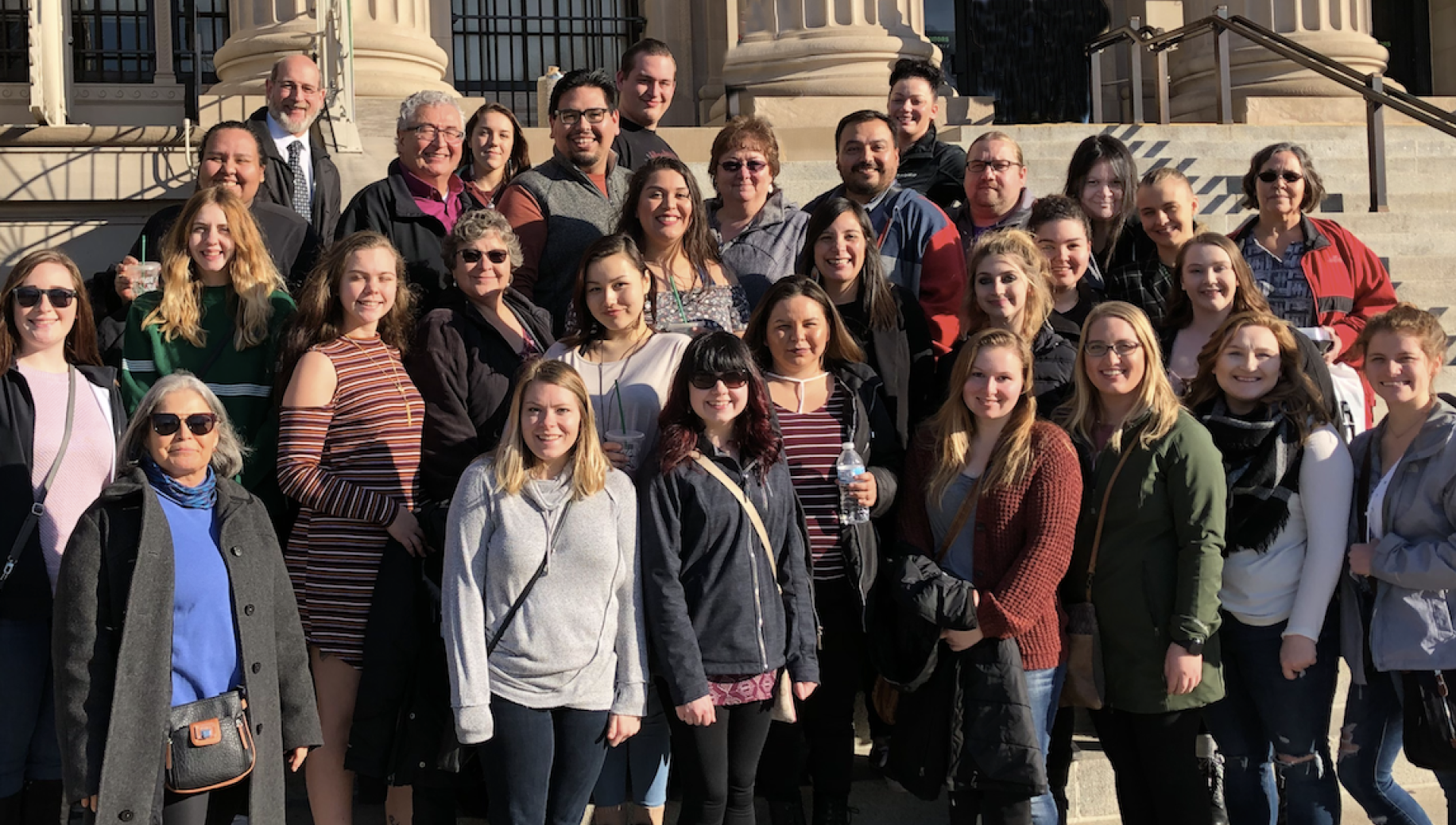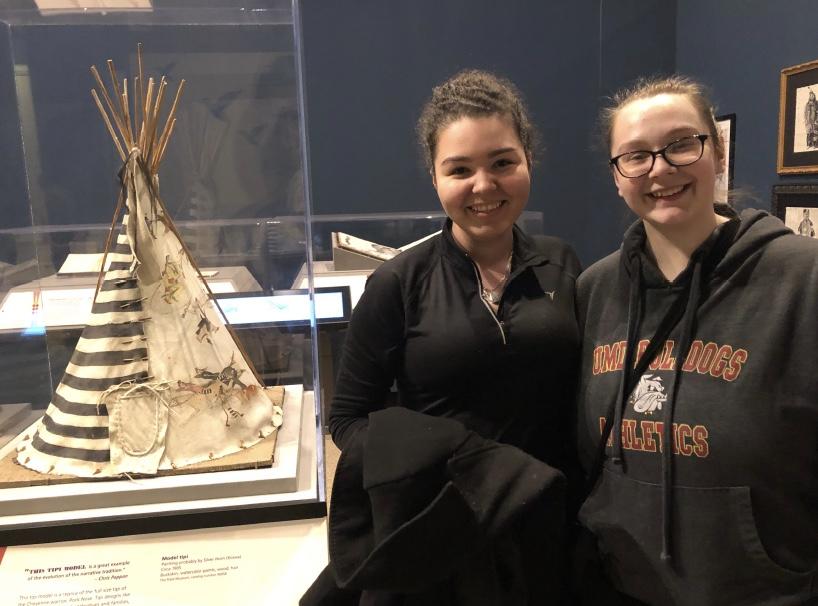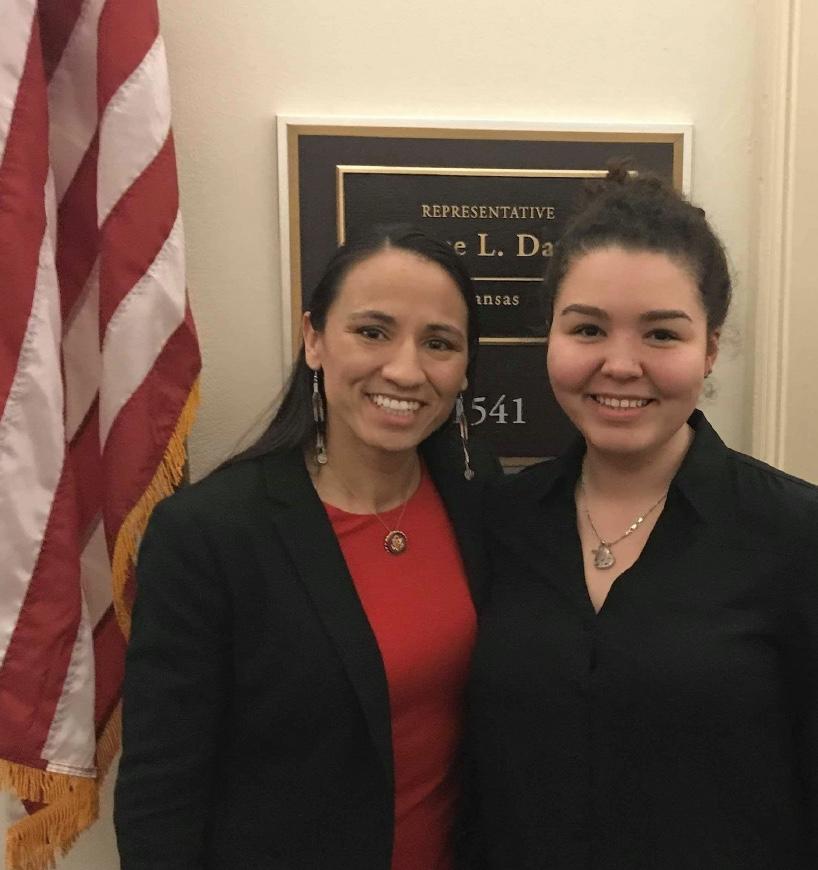
"It was a leadership trip, and the group was meant to reflect on history and prepare for events to come. None of them could have predicted the adventures that they would encounter.
Twenty-two college students took six days to travel from Duluth, to Chicago, to Washington, D.C., and then to Carlisle, Pennsylvania, before their return. They were from the University of Minnesota Duluth and the College of St. Scholastica, and one was from the University of Minnesota Twin Cities.

They spent hours with Native American art at Chicago’s Field Museum. They met an accomplished contemporary artist and saw treasured older pieces of bead work, towering totems, and contemporary art. In D.C., they met American Indian leaders at George Washington University's AT&T Center. They witnessed evidence of unspeakable atrocities at the U.S. Holocaust Memorial Museum and paid their respects at Arlington National Cemetery. The act of assimilation was viewed in the exhibits at the Carlisle Industrial Boarding School, where thousands of children were subjected to brutality in an effort to “Kill the Indian” in them in order to “save the man.”
A visit to the U.S. Capitol had a profound impact. The group was able to visit three congresswomen just days into the 2019 legislative session. The first visit was to Senator Betty McCollum, who puts the preservation of the environment high on her list. She called it "a sacred trust that we must protect and preserve for ourselves and future generations."

The final two visits were with Deb Haaland, Congresswoman from New Mexico, and Sharice Davids, Congresswoman from Kansas, the first two Native American women to serve in the House of Representatives. “We are the first, but I promise you, we will not be the last,” Haaland told the students.
“What an inspiring trip,” says Jasmine Landry, who is majoring rketing and minoring in history at UMD."
"Landry is a member of the Bad River Band of Lake Superior Chippewa. “Having these American Indian women in Congress will finally allow our voices to be heard and our stories to be told. [Davids] and [Haaland] will continue to preserve our values and educate those who would like to learn more about our people's history.”
Mark Pero, who is part of the UMD Master of Tribal Resource and Environmental Stewardship program, says, “The visit to the U.S. Capitol made me think about life and decision making. These legislators are making uninformed decisions that have long lasting impacts on the environment. The environmental programs in this country are getting gutted. We have relied heavily on Eurocentric science to band aid our current situation. We need to consider Indigenous knowledge systems as a way to reconnect to our mother earth. Now, with four Native legislators, there’s hope things could shift.” Pero also is a member of the Bad River Band of Lake Superior Ojibwe.

Landry was impressed by the museums they saw and the history they learned. “This trip has changed the way I view myself as an American Indian,” she says. “Meeting our two [Native American] congresswomen gave me the inspiration and motivation to continue to spread our stories with all. With this trip we saw beauty, pain, and, best of all, hope.”